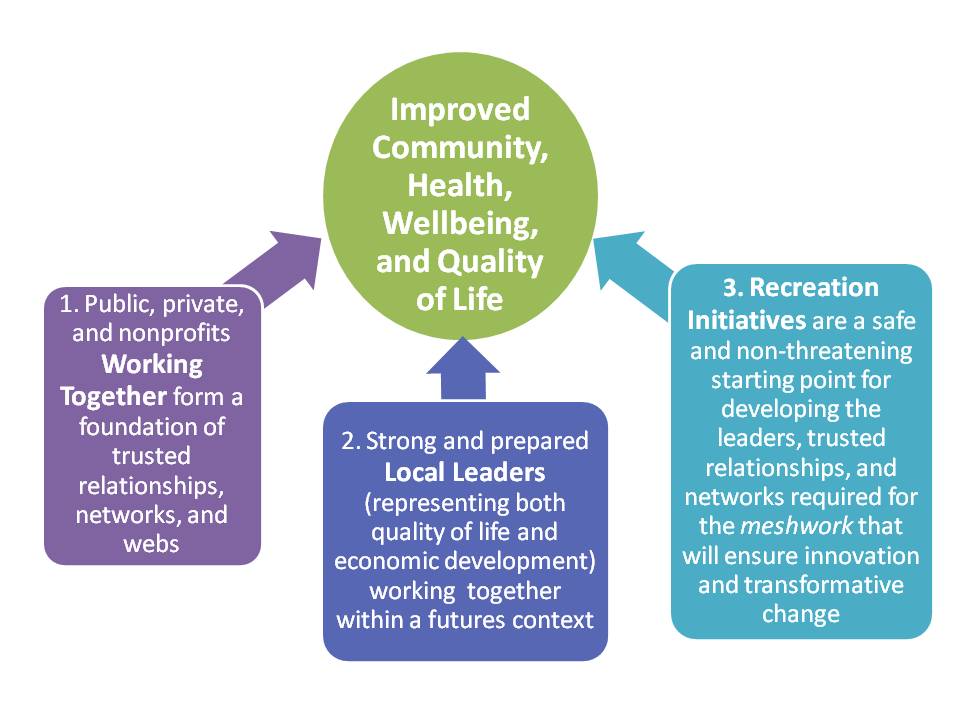When Economy Trumps Quality of Life We Pay a Price
Community building is in my heart and likely in my DNA.
While my career path first took me into the corporate world, I was attracted to the field of recreation because of its focus on outcomes—helping people grow and be healthy, building strong families and communities, working with those who were disadvantaged, protecting the environment, and adding to the quality of life in our communities.
I subsequently worked in a variety of settings including a Boys and Girls Club, municipal recreation, Niagara College, then with the Alberta Recreation and Parks Association (ARPA), and now with my own social enterprise called Campus for Communities.
Much of my work focused on community development and community leadership. Yet, regardless of where I worked and the creativity, innovation, and impact of our teams, we continually struggled to justify our work and advocate for the benefits and outcomes we delivered. For reasons beyond me, quality of life never quite measured up to the economic development on the other side of the ledger.
As a result, I’m puzzled as to why more people don’t see that when economic development takes priority over quality of life, our personal, social, and environmental health and wellbeing is jeopardized.
When there is an imbalance and the economy is deemed more important than happiness and quality of life, health care costs escalate, social capacity is reduced, civic engagement lessens, the environment is not prioritized, levels of income disparity increase, community resiliency wanes, investment in learning, growth and development decreases, and innovation declines.
Despite not always being recognized as an essential service, recreation has the power and potential to address happiness and quality of life and contribute to greater balance in our communities:
We know that children, youth, and adults need to participate in recreation and active living to ensure:
- healthy bodies;
- mental health and wellbeing;
- strong self-esteem and positive self-image;
- social and life skills;
- opportunities to explore their personal potential;
- improvement in their academic success;
- quality of life and happiness, and;
- opportunities to develop their leadership potential.
We know recreation assists communities to:
- reduce self-destructive behaviour and incidence of crime;
- increase interaction between diverse cultures within a community;
- reduce isolation, loneliness, and alienation;
- contribute to stronger families;
- stimulate involvement in community life;
- ensure opportunities to better understand community, history, and environment;
- create a sense of belonging;
- attract new businesses;
- enhance tourism;
- increase an environmental ethnic;
- build community pride, and;
- encourage youth to stay in the community.
So what can we do to deliver more of these benefits?

Leaders at all levels, with or without the title, need to proactively seek opportunities that promote government, business, and community organizations working together for the broader community good.
Investing in the development of these local leaders will ensure they have the competencies for working collaboratively within a futures context. Additionally, neighbourhood and recreation activities are a safe and non threatening starting point for developing the leaders, trusted relationships, and networks required for the meshwork that will ensure innovation and transformative change that comes when we balance economy with quality of life.
In essence it is about ensuring we are focusing on both economic development and quality of life. Ultimately, like a lot of things in life, its about balance.
Posted on 07-26-15Next entry: Recreation: Poised for Big Data Analysis?
Previous entry: Small Town Advantage

 Brenda Herchmer is the owner of Grassroots Enterprises, a community development consulting company.
Brenda Herchmer is the owner of Grassroots Enterprises, a community development consulting company.